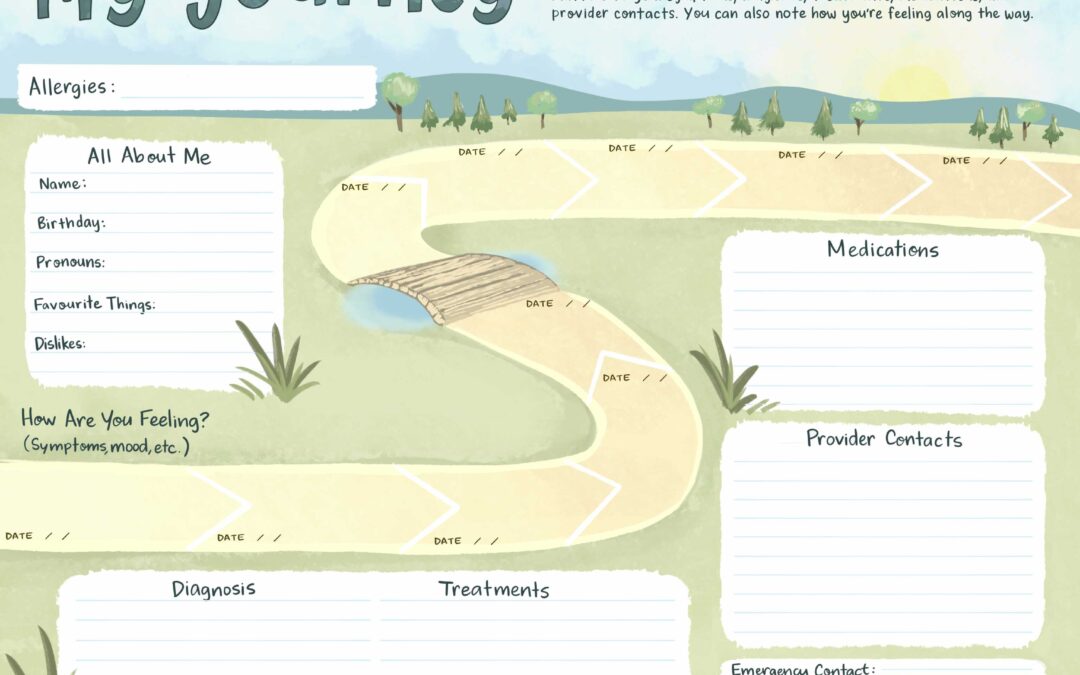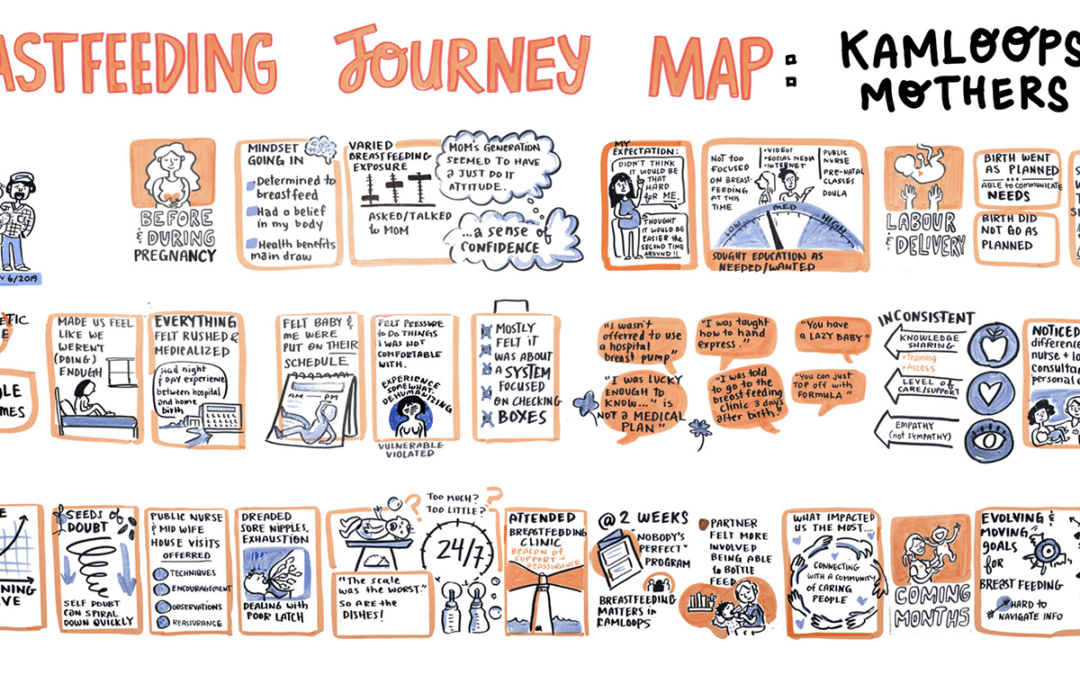Large conferences are a hive of keynotes, breakouts, and networking. Engagement Walls are a powerful tool for tying all these threads together into one large visual map, based on insights shared from people who visit the Engagement Wall.
Engagement Walls typically have one or two prompt questions to get people thinking, and the graphic recorder draws their responses to these questions in real time.
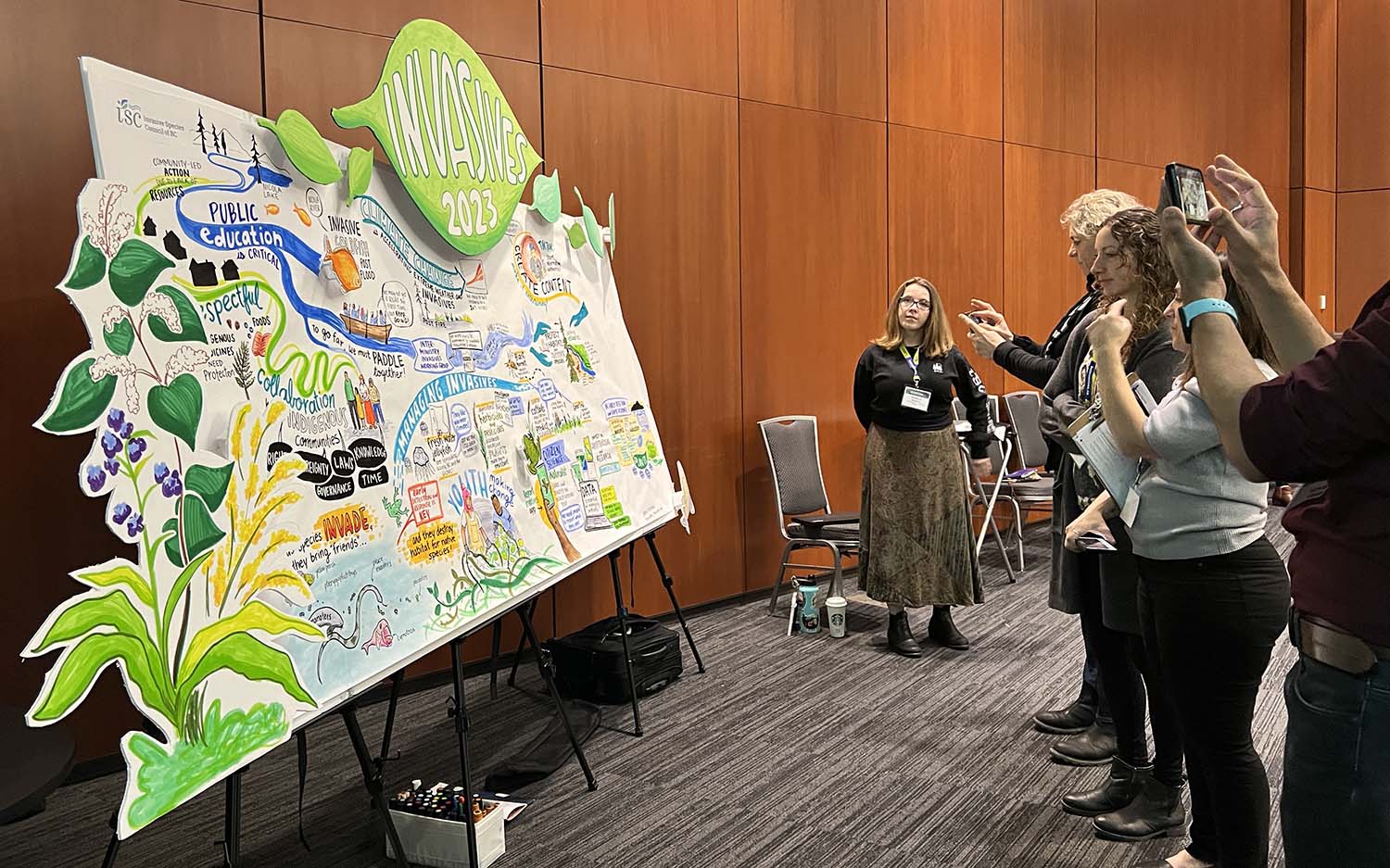
However, Engagement Walls can also be immersive and hands-on, such as Knowledge Trees, Ribbon Maps, Augmented Reality, or other interactive elements.
The Value of Engagement Walls
Engagement Walls enhance events by:
- Giving people the opportunity to share their ideas, questions, or “ah-ha” moments in one visual collage
- Deepening understanding of topics by seeing other people’s ideas, or by engaging in augmented reality content
- Creating a dynamic physical space for people to interact with and move through, essentially learning “on your feet”
Best Practices
We’ve been creating interactive Engagement Walls since 2010. The best Engagement Walls are born from good planning to ensure they’re authentic. Before designing an Engagement Wall, we must first understand your audience, the purpose of the event, and how best to engage people. There are a few considerations for a powerful Engagement Wall experience:
Is there enough time?
Large events have a lot happening simultaneously, however it’s critical you don’t overbook the agenda. People need time to digest what they’re hearing, connect with peers, and transition between sessions. The Engagement Wall is part of this breathing room: it’s an opportunity for people to reflect on what’s being shared, and provide their own voice to the wall.
Incentivize engagement
Depending on the event and what would work best for the audience, it can be wise to incentivize people to stop by the Engagement Wall. This could be as simple as the emcee reminding people about the wall throughout the event. Or it could mean having the Engagement Wall as a designated activity people can choose to do during breakout sessions. We’ve even supported an event where people had a mini-passport and they could collect stamps by visiting different stations, the Engagement Wall being one of them!
Type of interaction
We’ll ask you a series of questions to get a better sense of your audience and the format of your event so we can determine what type of interaction would work best. For example, Ribbon Maps are excellent for making connections across complex systems of people. Augmented Reality is a way of annotating the Engagement Wall with deeper knowledge, videos, and resources.
Prompt questions
The prompt question(s) for the wall should be concise and thought provoking. We want to avoid questions that are too general (“what did you like best?”) and instead try to get richer responses from people. For example: “what is one action you’ll be taking back to your team?” or “what surprised you about the first keynote?”
Size, space, and transport
Engagement Walls should be impressive and eye-catching to help draw people to them. But there’s nothing worse than crowding the space with too big of a wall and not enough room for people to gather.
We also consider how best you can display the wall afterward in your offices, or bring on a tour between sites. Depending on your needs, this may mean we work on paper so it can easily be rolled up in a sturdy mailing tube for transport. Or if a large scale solid wall is best, we may work on foam board panels that can be folded down into smaller sections.
Graphic recorder’s role
It’s important that the graphic recorder creating the Engagement Wall is someone who is outgoing, friendly, and able to pull ideas out of people. Lining up the right person for the role is key to everything coming together well!
At very large events, we may need two or more graphic recorders to help engage people at the wall. Or if the event is highly technical in content, it can be valuable to have someone from your team at the wall to answer questions and engage people.
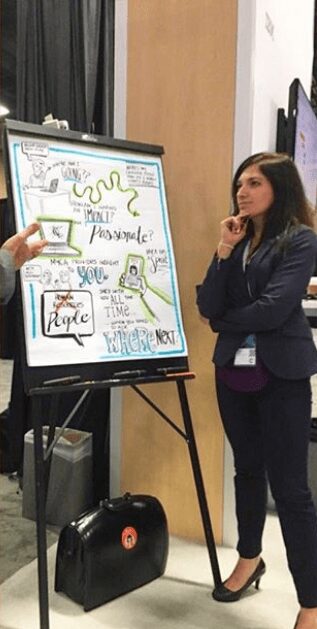
Draft mock ups
Before we start construction on the wall, we share proposed drafts with you to hear your feedback and ensure we have an approved version before committing to materials and design.
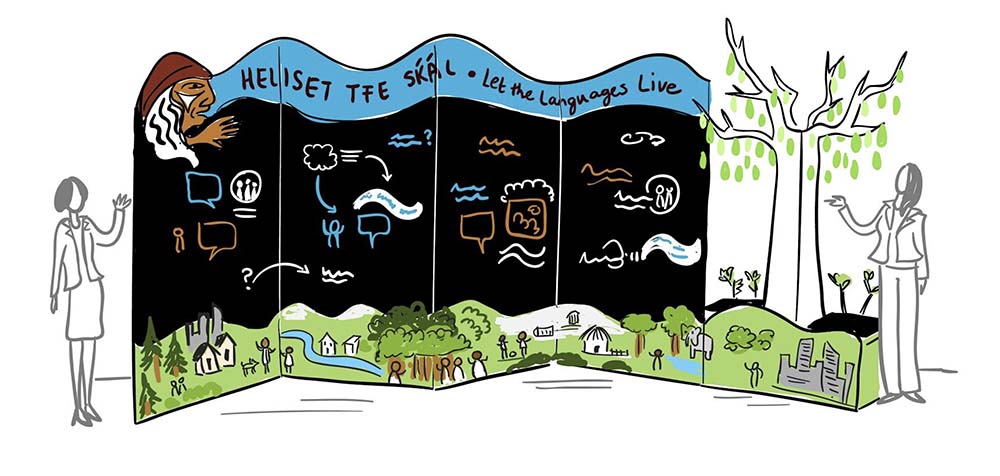
Examples of Engagement Walls
Question wall
These are the most basic Engagement Walls. We craft 1-2 prompt questions for people to respond to and the graphic recorder illustrates their ideas in real time.
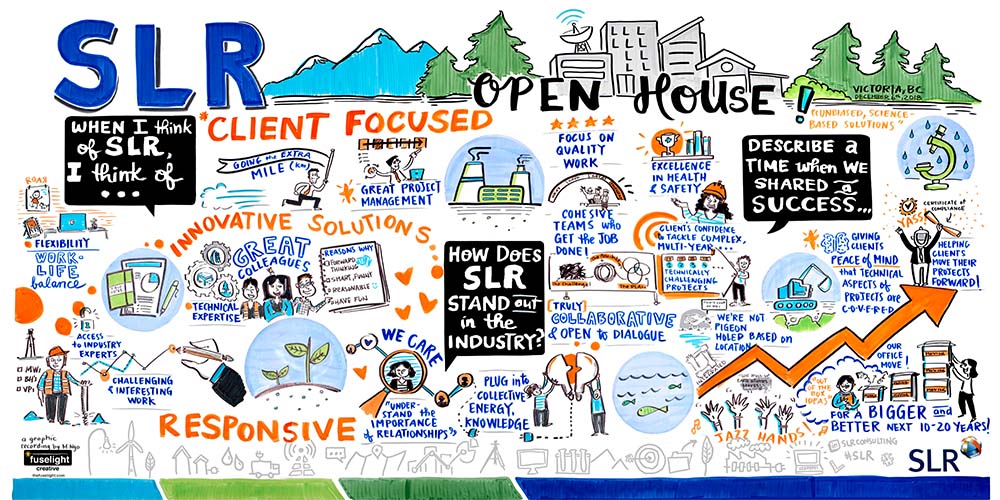
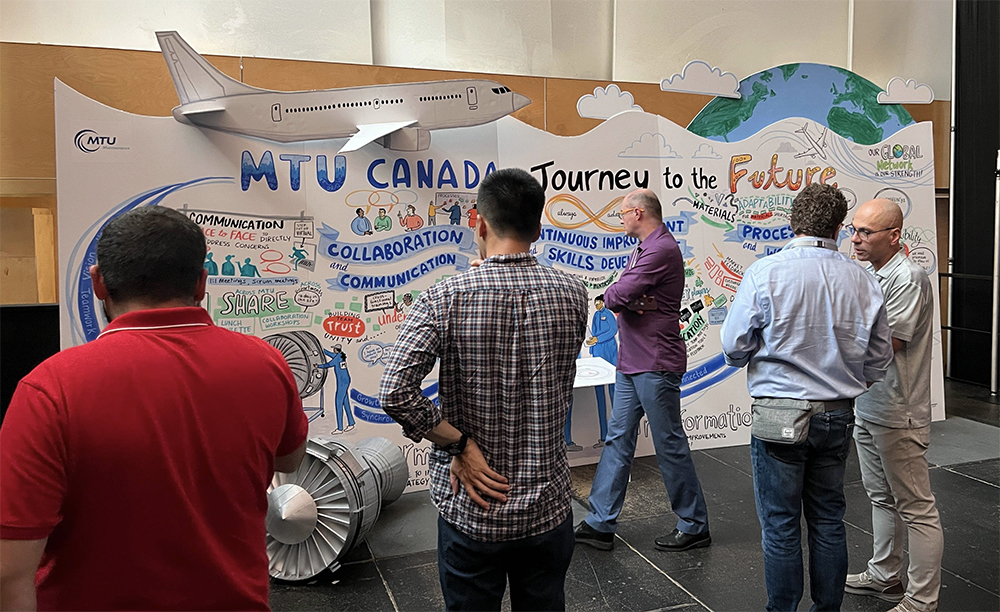
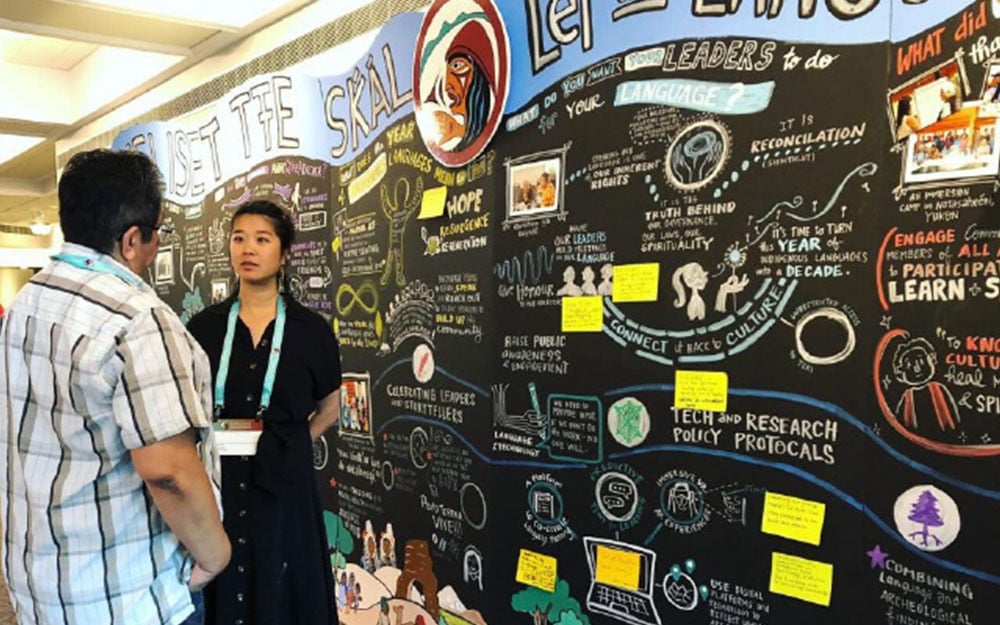
Knowledge trees and campfires
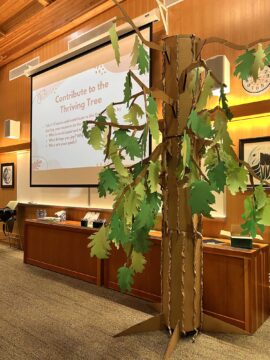

The Knowledge Tree has a simple prompt of “what do you wish for the future” or “who / what inspires you the most and why?” People pluck a leaf or bough from the tree and write or draw their thoughts, then add it back to the tree.
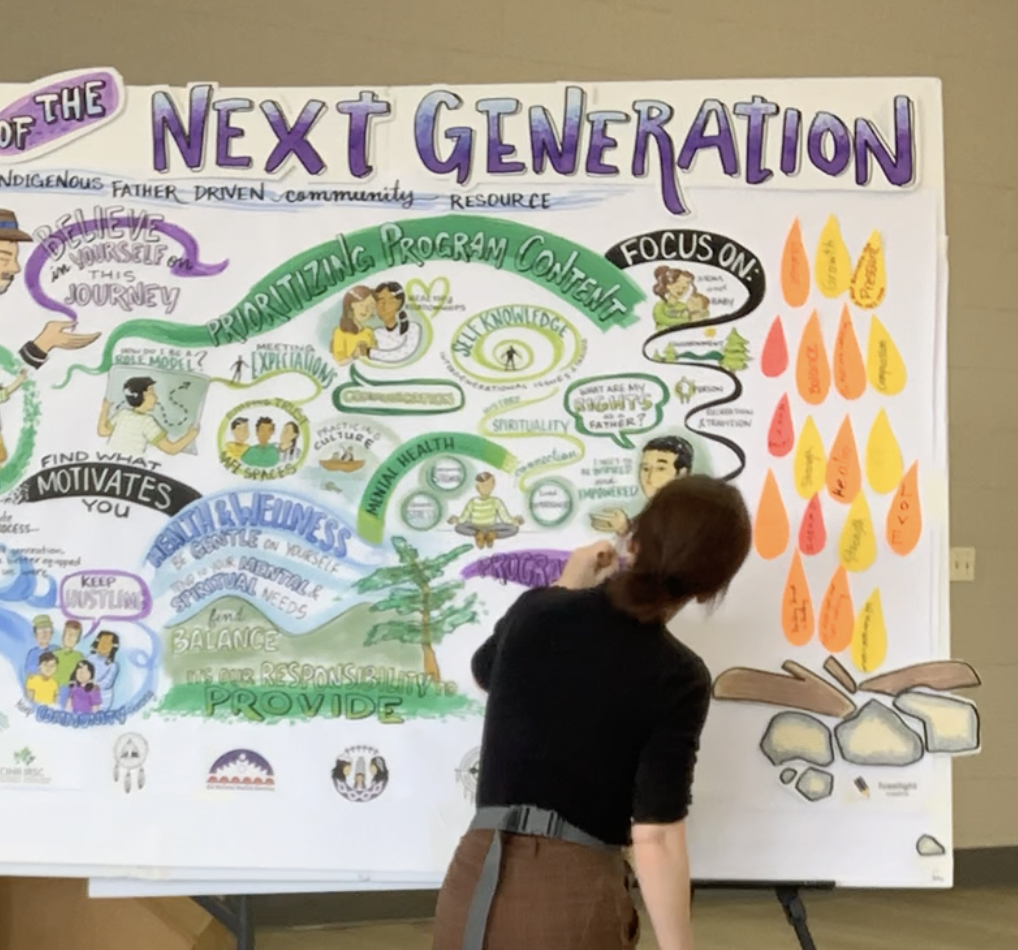
Similar to the Knowledge Tree, a Campfire is another method of consolidating group ideas into one larger metaphor. Each person was given a paper flame for the fire and they wrote their top wish for the future.
Augmented Reality
Augmented reality can be added to any wall as a way to “annotate” the wall with a hidden layer of facts, images, links, and videos. The augmented reality will continue to work on the wall indefinitely, so the it can be displayed after the event to continue to engage people in your content.
Ribbon maps
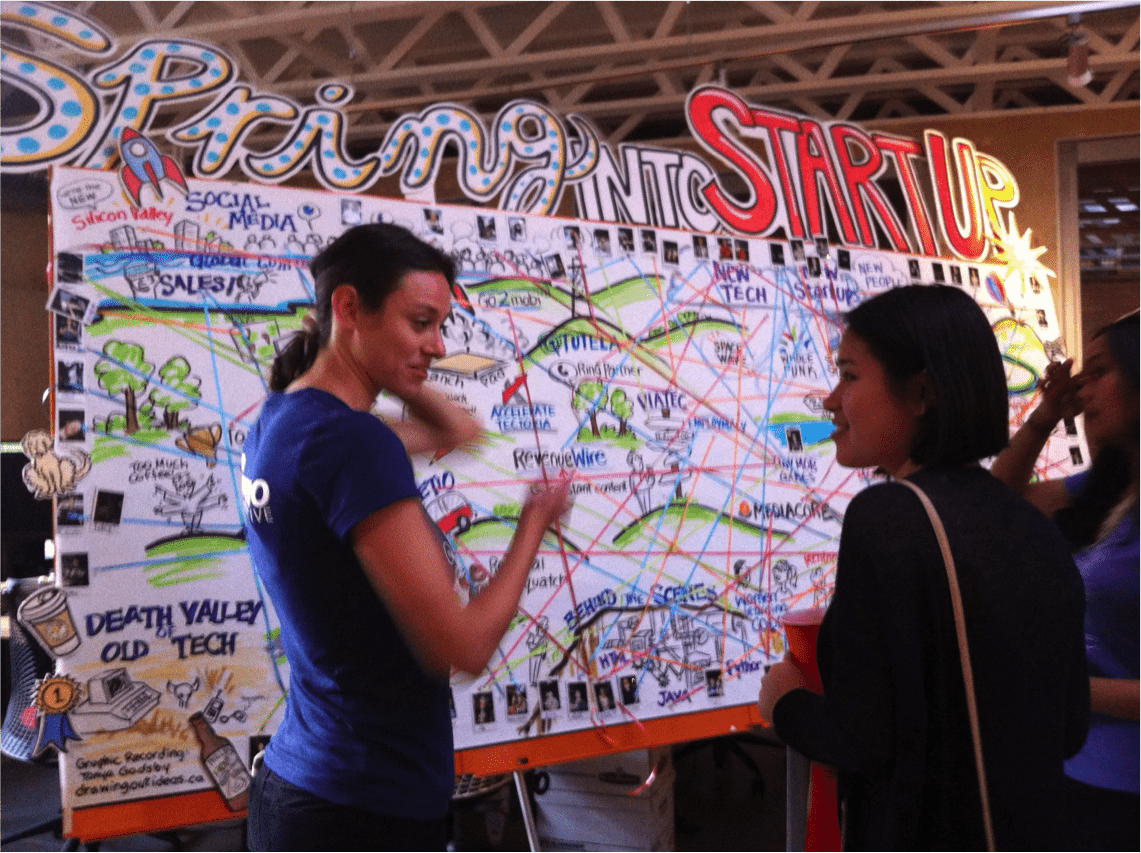
At networking events, a Ribbon Map has people connect a polaroid of themselves to different sections or people on the map. It’s a powerful way of showing the interconnections across a community (in the image above, people working in tech start ups), and serves as a conversation starter.
Graffiti city
This is a “walkthrough” experience for people: they can weave in and out of the city to check out the different thoughts their colleagues have added to the buildings. This installation is a great fit for events addressing urban planning, sustainable buildings, and the future of neighbourhoods.
Domes & globes
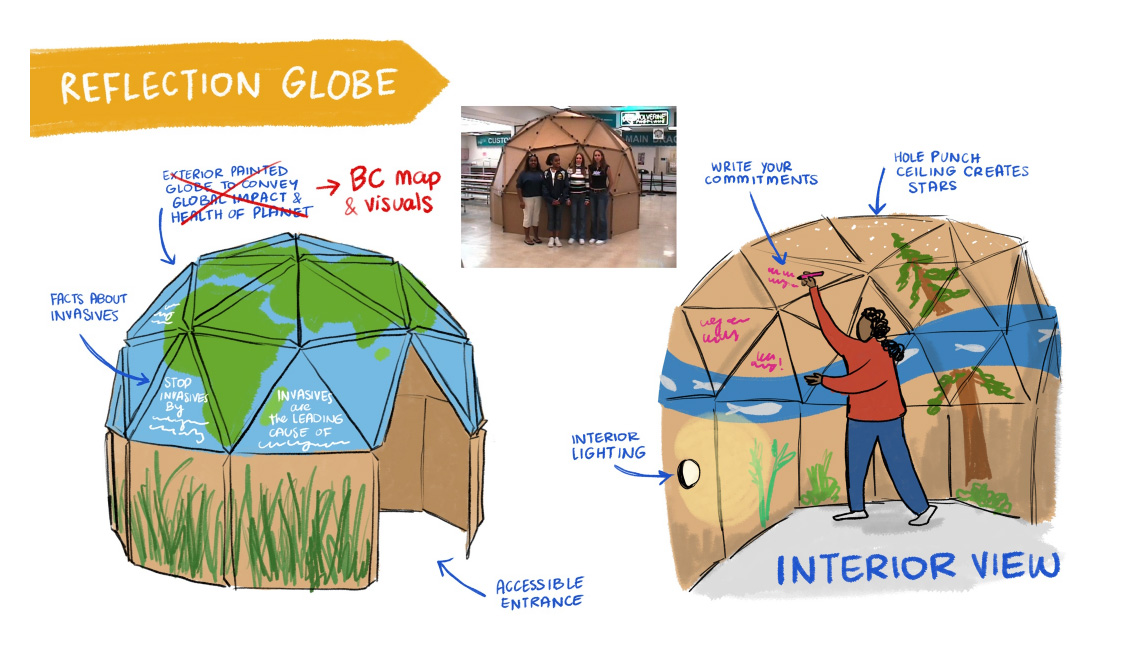
The Reflection Globe is an opportunity to show two sides of an issue: what we see on the outside, and what is underneath (inside the globe). Entering the globe changes people’s perspective, and we use light and the space to create an environment of reflection. Globes are a great fit for climate conferences and multi-day events where there is ample time for people to interact with the space.
Multi-touch walls
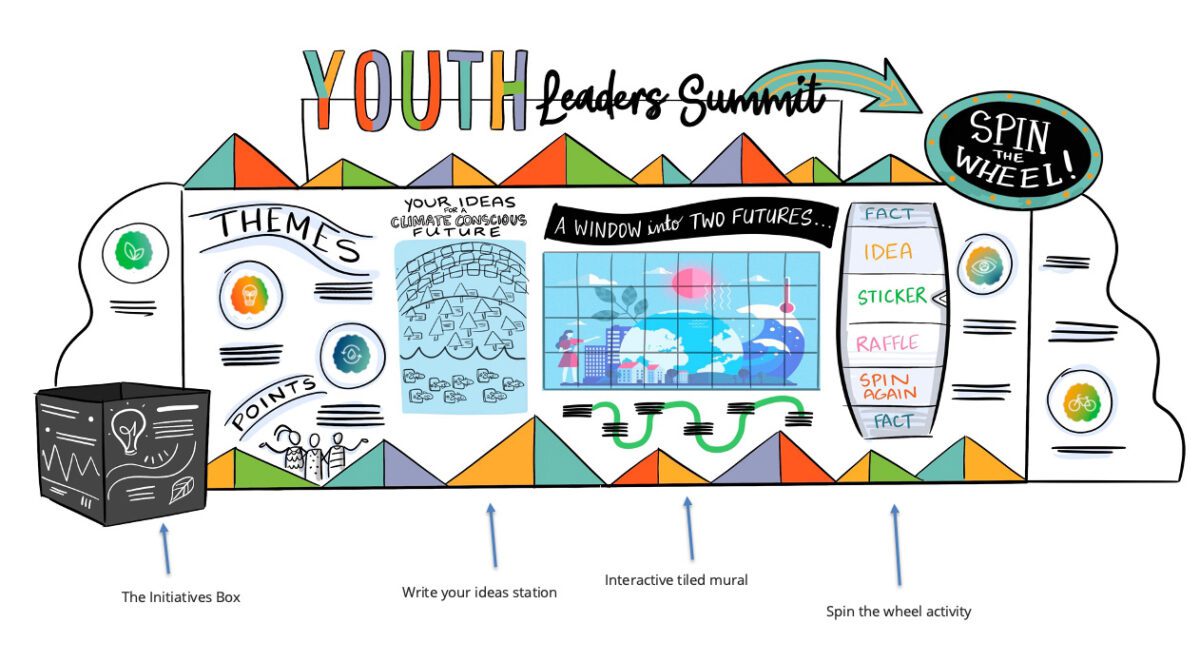
These walls bring together multiple experiences into one large scale wall. Due to their size and multiple interactive sections, they’re excellent for multi-day, high-energy events. There may be tiles to flip to reveal information, sections to write your commitments, and various touch points across the wall.
Digital touch walls
Walls can also be made digitally interactive through projection mapping. People touch different sections of the wall to reveal animations or playful interactions. These walls can be large scale and intended for long-term use (as in the video above), or they can be a smaller scale, simple set up:
Any format of Engagement Wall can be mixed and matched to create an authentic and memorable experience at your event. Check out our Engagement Wall page for more examples, and reach out to us about your next project!
